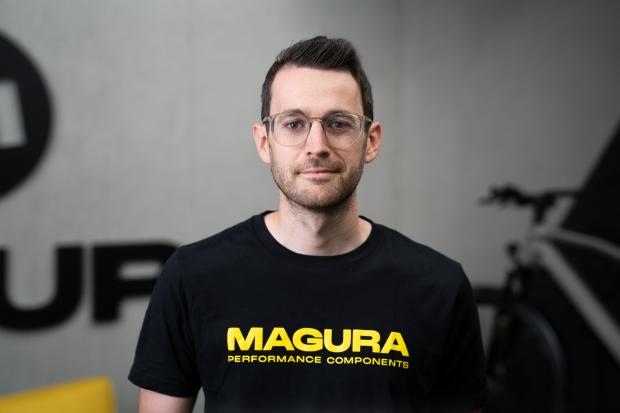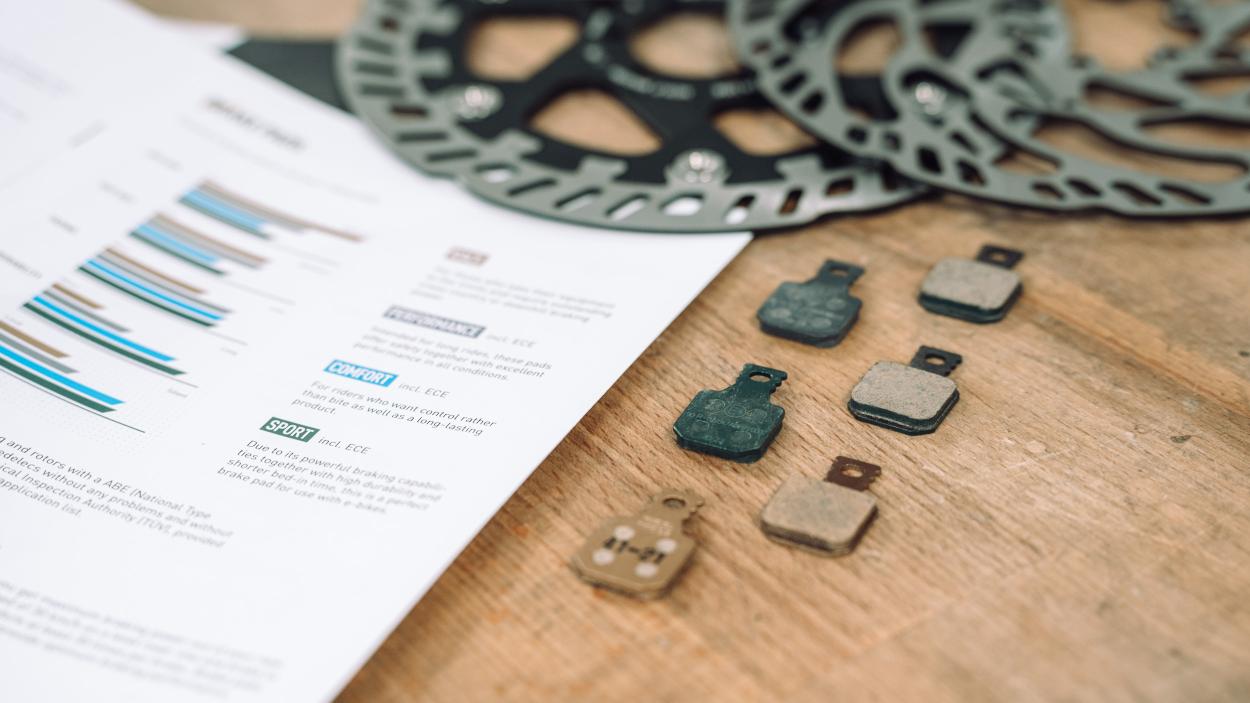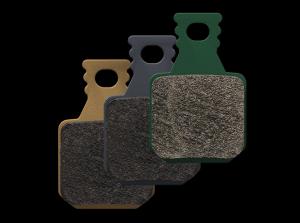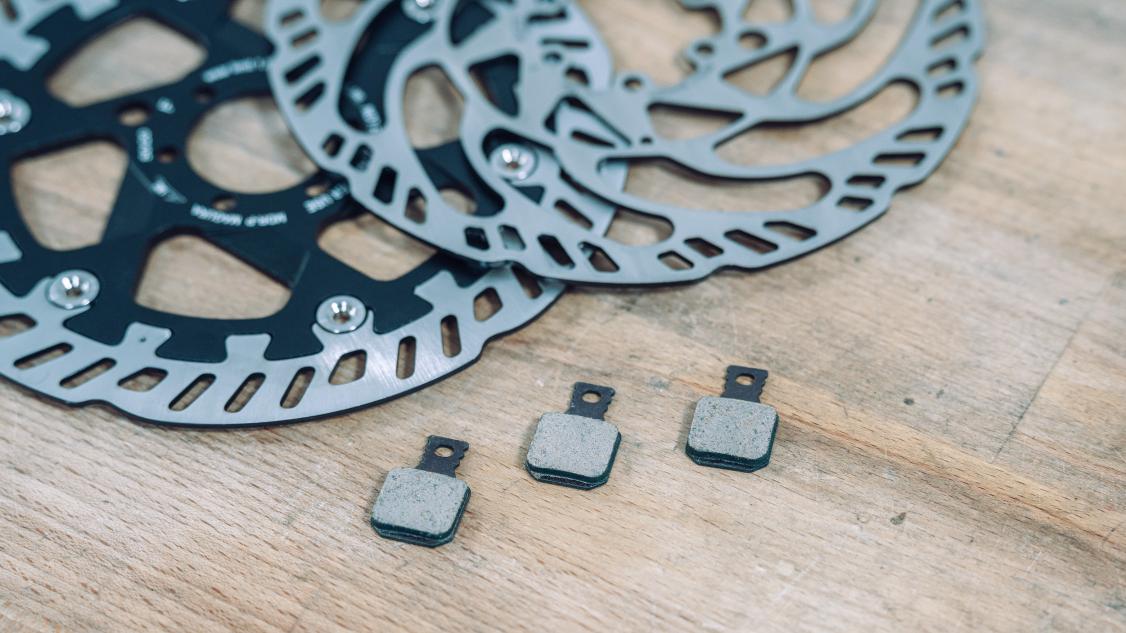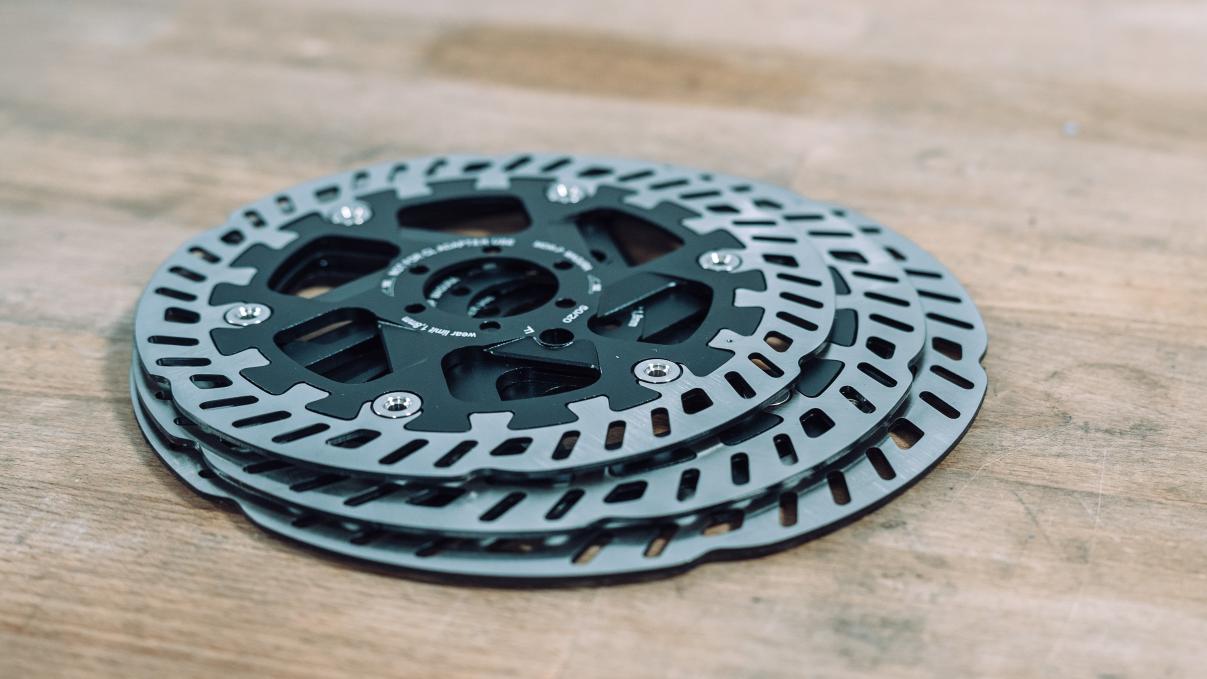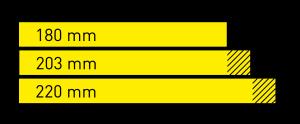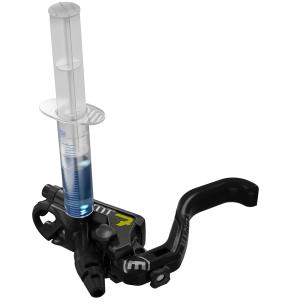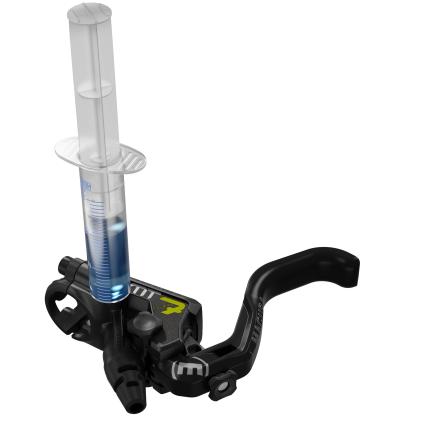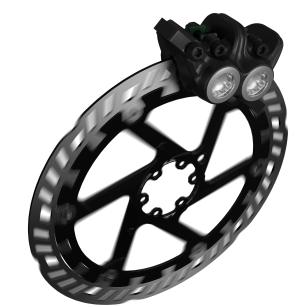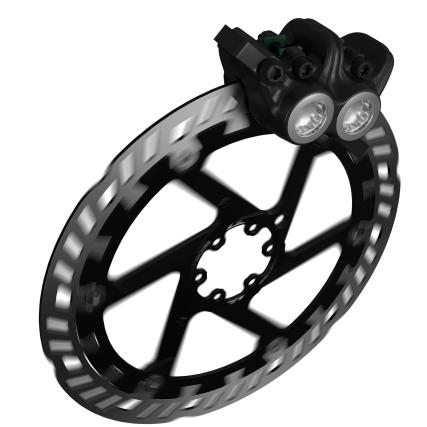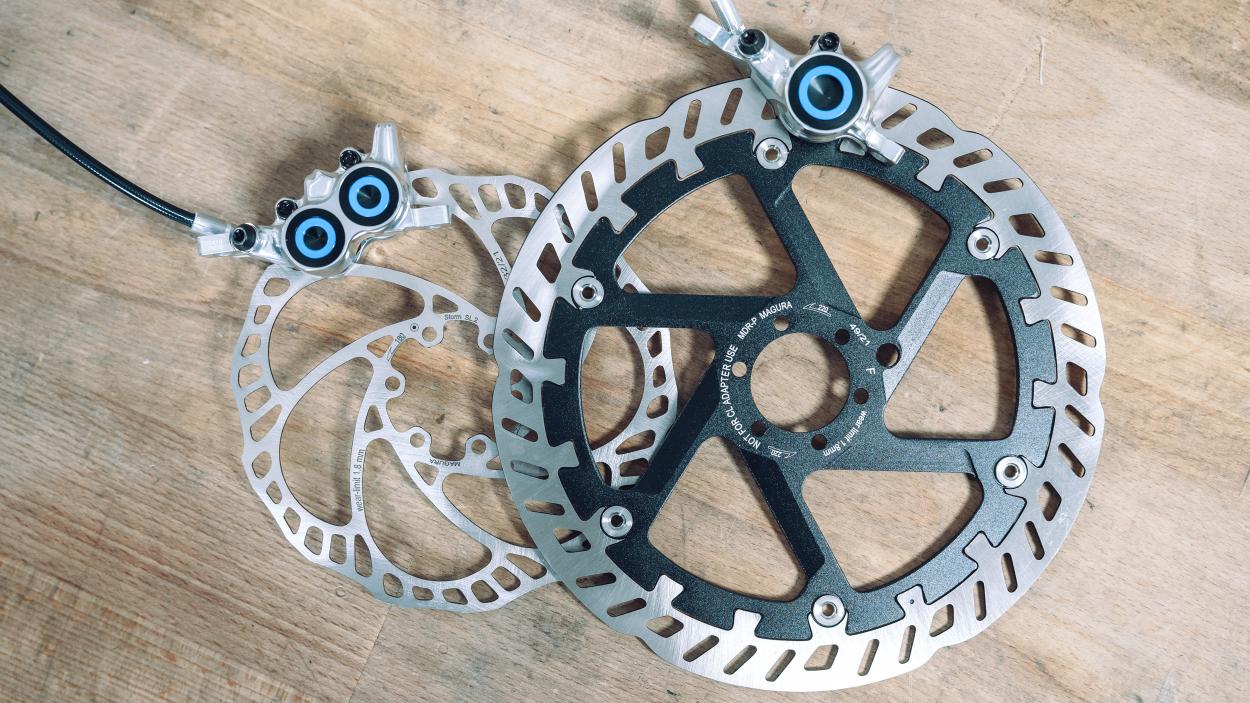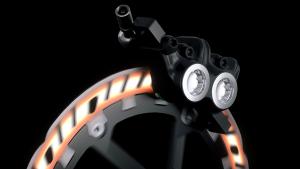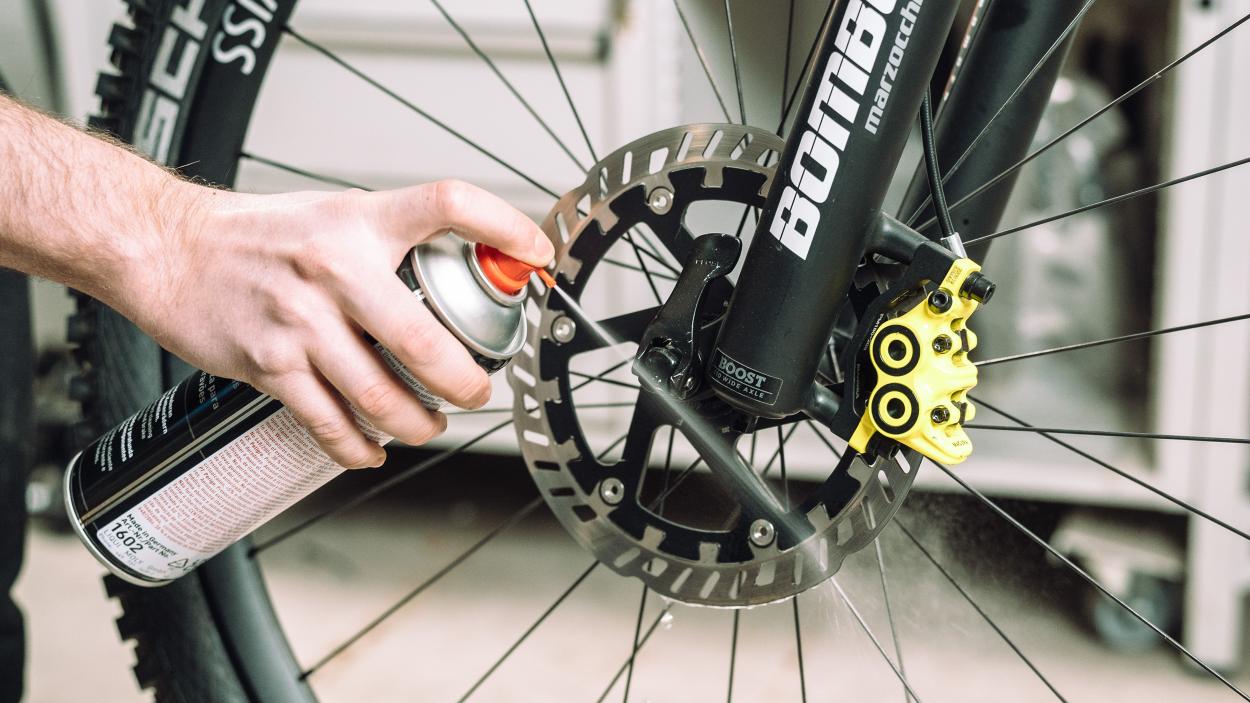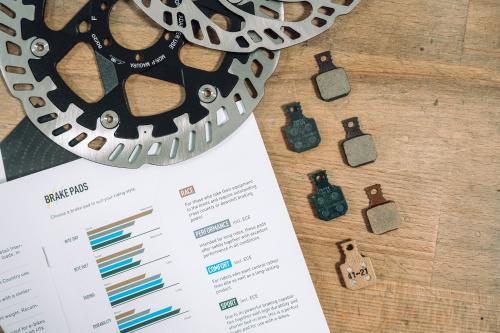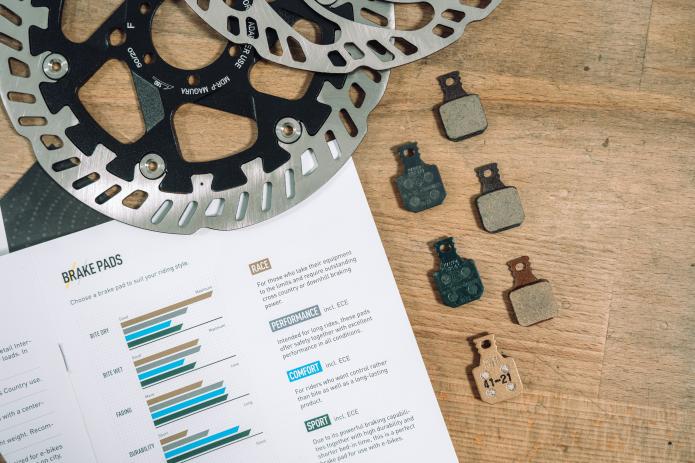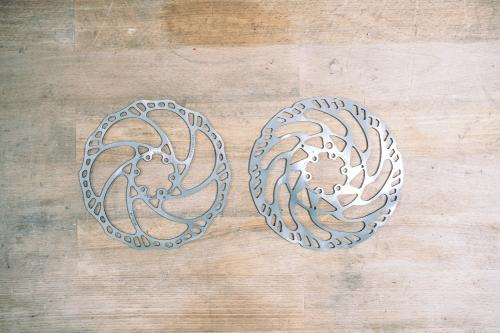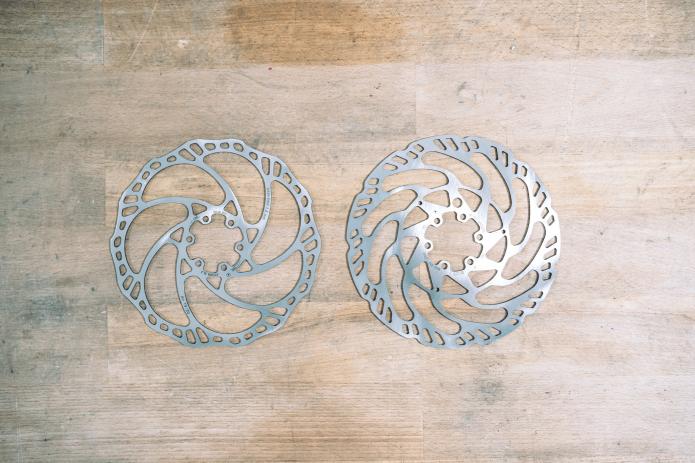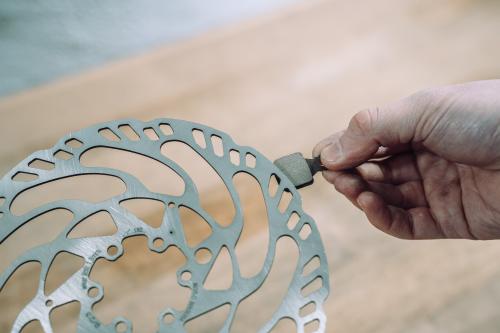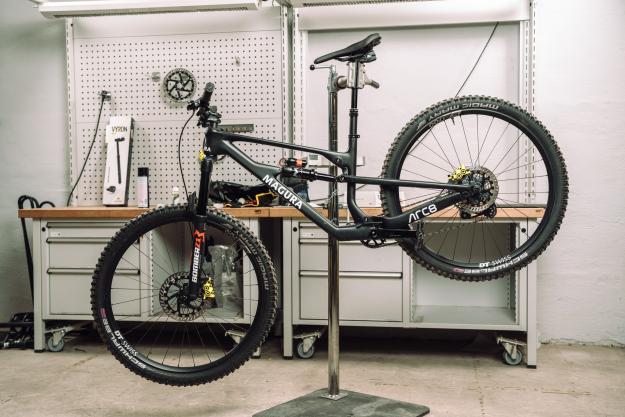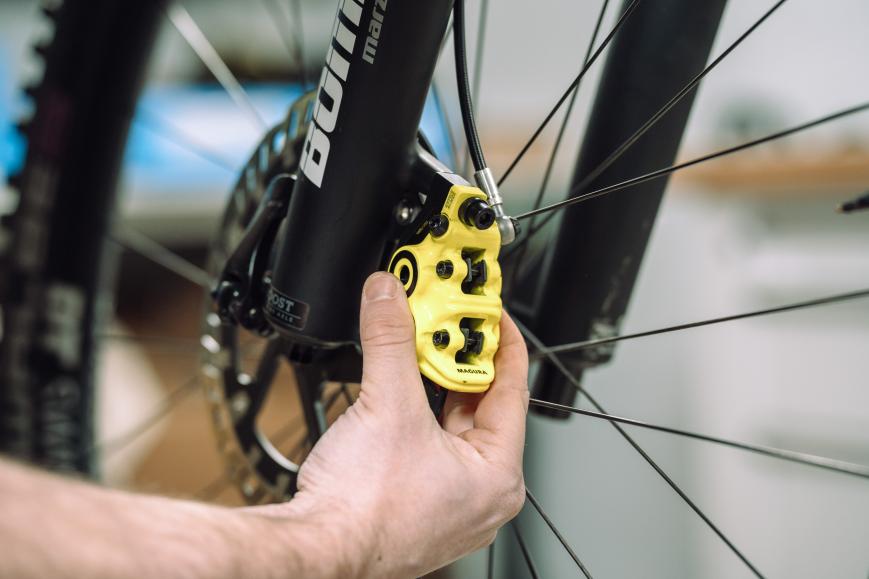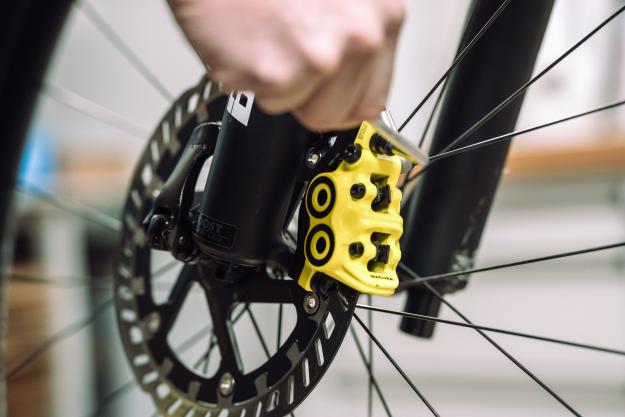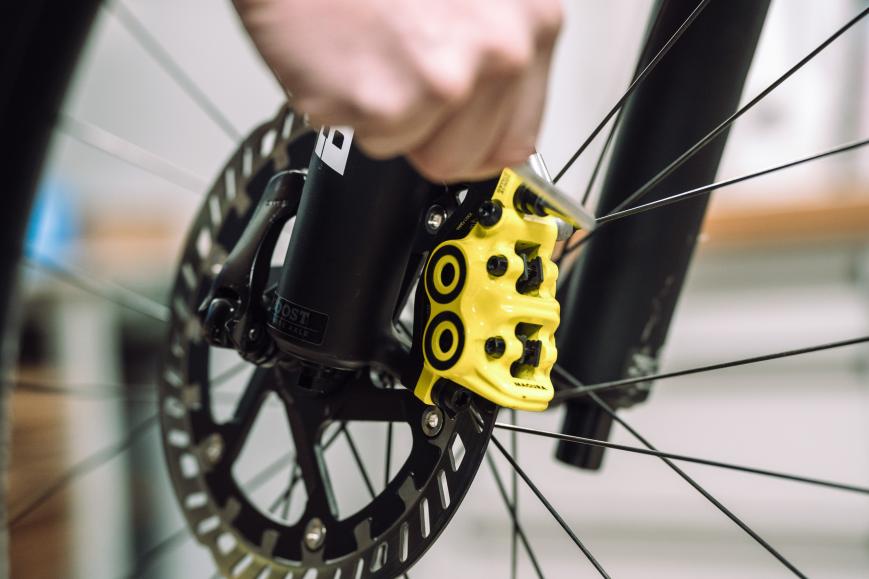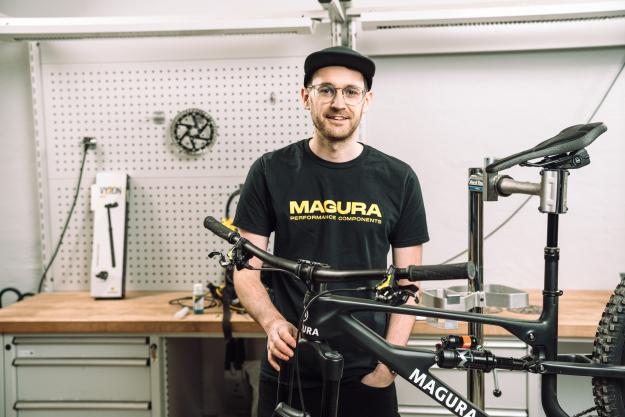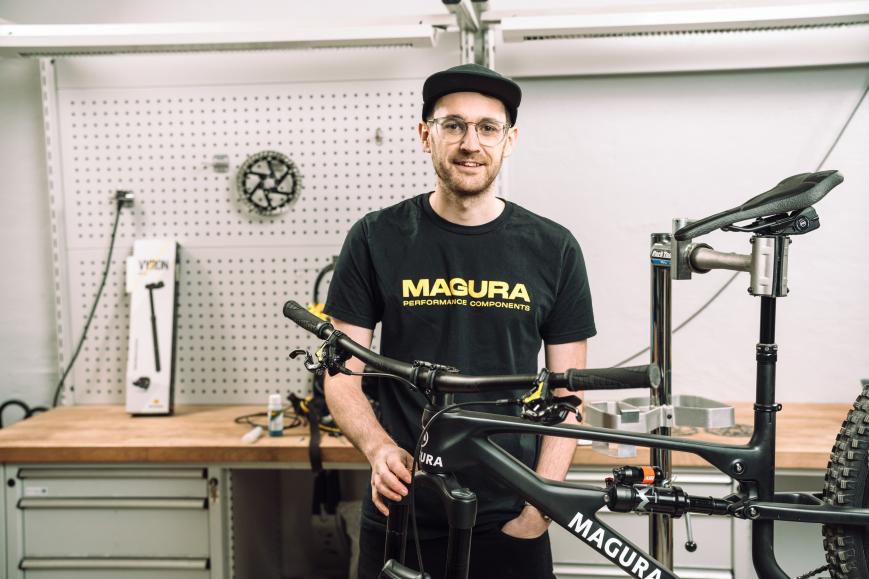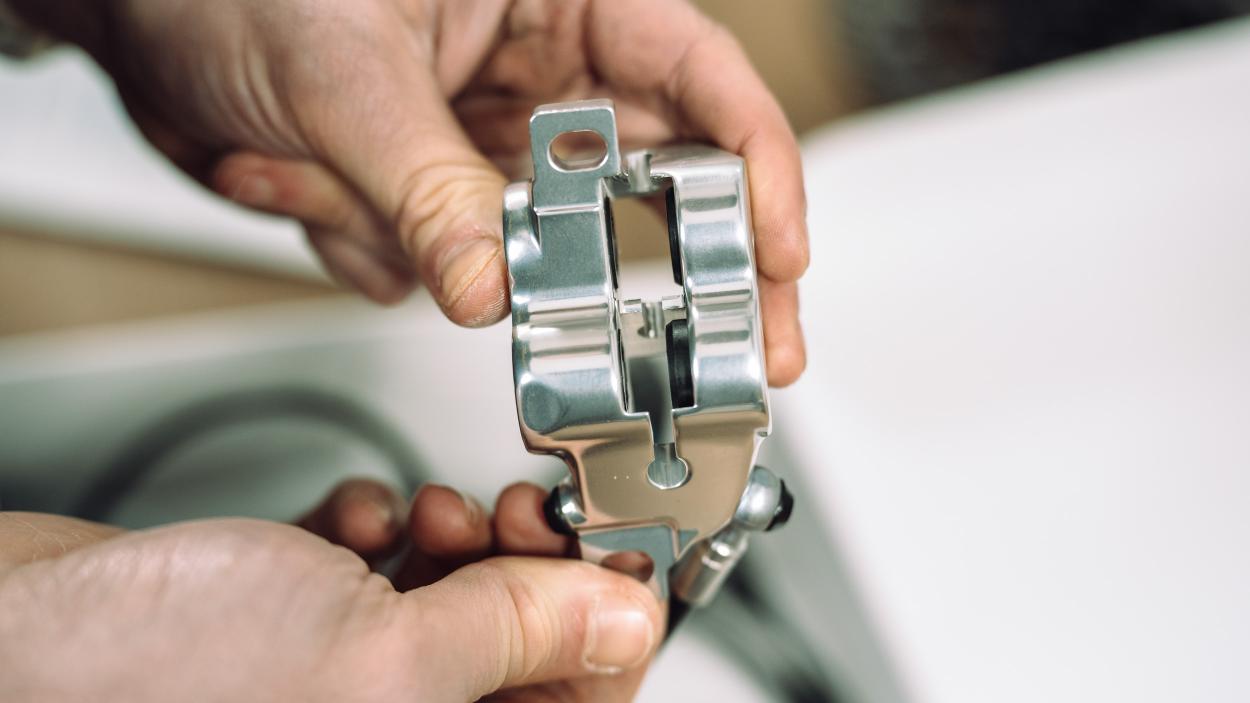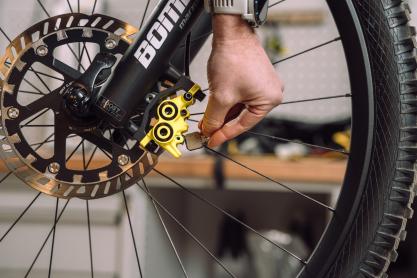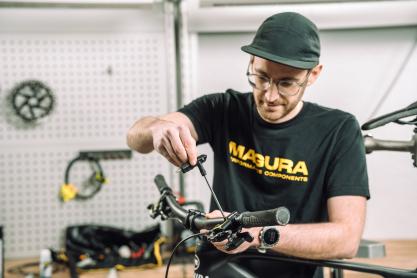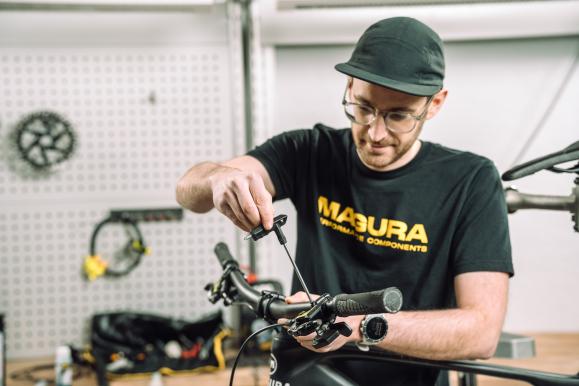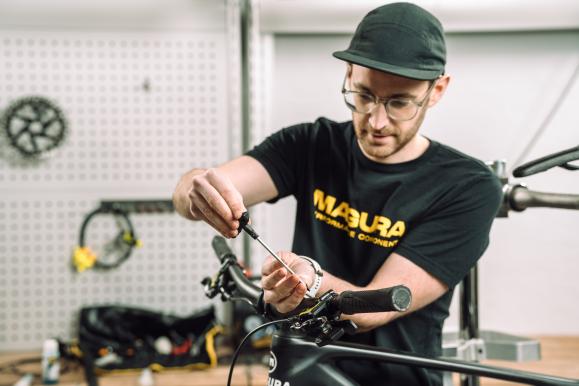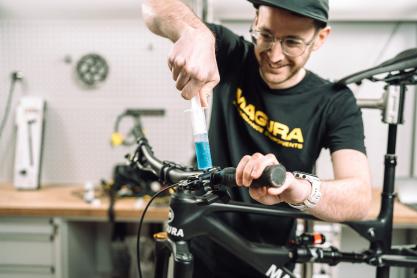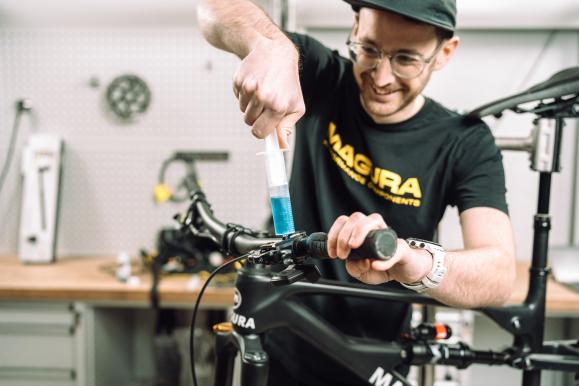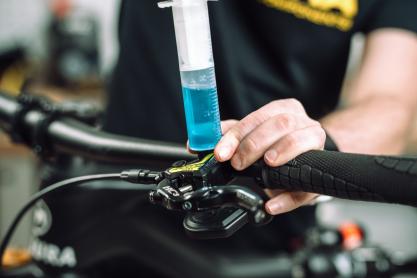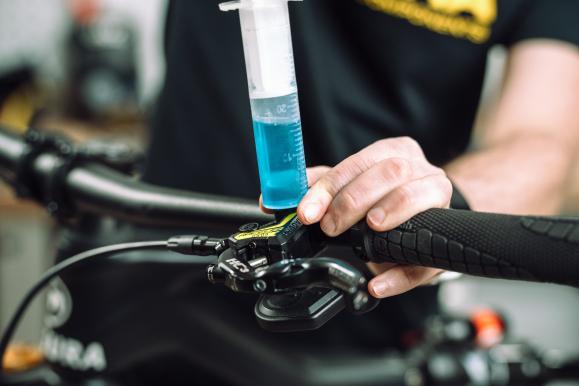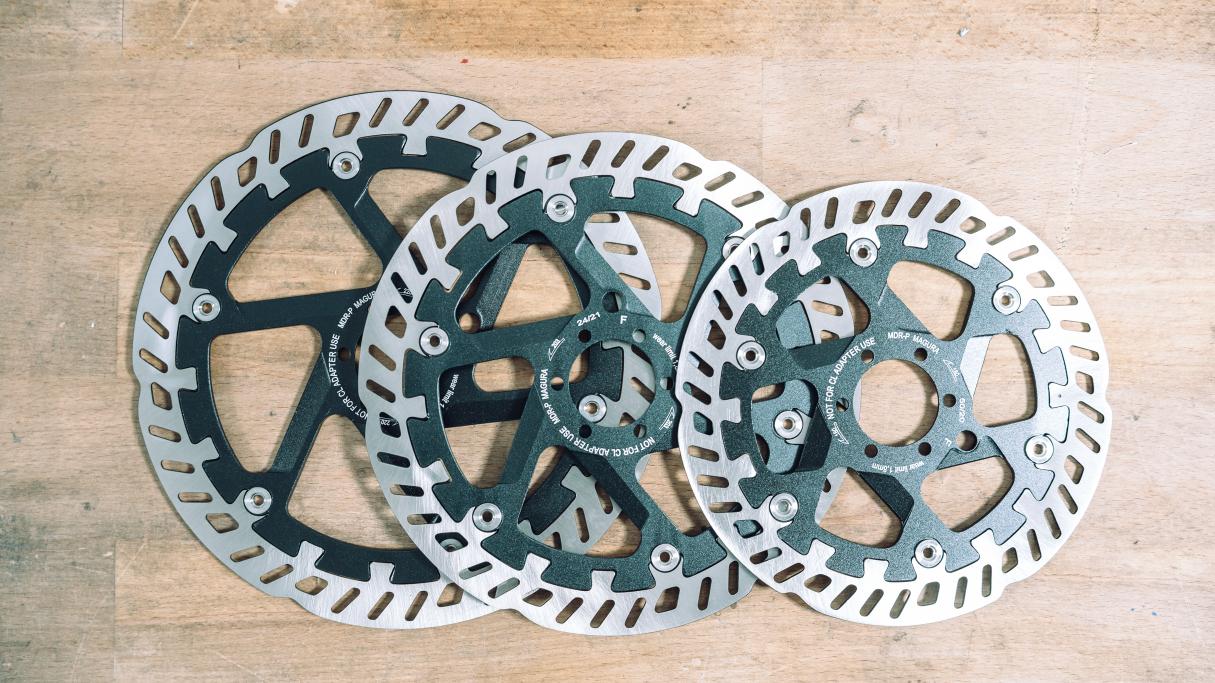
Tips & Tricks for Mountain Bike Brakes powered by Magura
29.01.24 10:58 522024-01-29T10:58:00+01:00Text: NoPain (translated by AI)Photos: MaguraBreaking Down Brakes: "Switching the brake disc from 180 mm to 203 mm results in 10% more power." An in-depth interview with the developers at MAGURA about brake pads, discs, and the art of optimizing braking performance.29.01.24 10:58 3302024-01-29T10:58:00+01:00Tips & Tricks for Mountain Bike Brakes powered by Magura
29.01.24 10:58 3302024-01-29T10:58:00+01:00 NoPain (translated by AI) MaguraBreaking Down Brakes: "Switching the brake disc from 180 mm to 203 mm results in 10% more power." An in-depth interview with the developers at MAGURA about brake pads, discs, and the art of optimizing braking performance.29.01.24 10:58 3302024-01-29T10:58:00+01:00Disc brakes have become established on almost all types of bicycles and are considered mature. In theory, one can expect perfect function with minimal maintenance. However, in practice, it often looks different, as many cyclists are repeatedly confronted with classic disc problems such as fading, squealing, and rubbing, as well as with the question of which pads they should use after the first wear. But what are actually the advantages and disadvantages of organic, sintered, original, and tuning pads?
To get answers to these and other questions from our users and to clear up numerous technical myths, we conducted detailed conversations with various developers from the hydraulic specialist MAGURA. This was particularly about brake pads and discs - the secret heroes of braking performance.
The selection of the right bicycle parts is crucial,
to optimize the performance, safety, and comfort of your bike.
Organic or sintered pads? Which are best suited for specific applications?
MAGURA: "The distinction between sintered (metallic) and organic pads is considered very contrasting in normal use. Sintered pads are described as very durable & heat-resistant, and organic pads as more aggressive during short braking.
However, as often in life, there is actually no stark black or white here, since the components can be very similar. Every brake pad consists of a multitude of components and fillers. Many organic pads have a high metal content. Nevertheless, there is no established standard for the use of these terms. Therefore, it is not possible to compare pads from different manufacturers based solely on their designation. Whether a pad is described as organic or semi-organic is currently at the discretion of the manufacturer.
Whether a sintered or organic brake pad fits a specific application is also a question of the brake system. MAGURA recommends exclusively organic pad mixtures with less than 30% metal content for all MT brakes. The braking system and our own spare parts are not designed for the behavior of sintered pads with a high metal content.
MAGURA categorizes the different types of pads as follows:
• Organic: < 30 % metal content
• Semi-sintered: 30-60 % metal content
• Sintered: >60 % metal content
We finally recommend customers to always pay attention to the pad descriptions and recommendations of the manufacturer. Comparing between manufacturers is difficult."
Generally, the choice of surface can affect braking performance by around 20%.
That's worth it!Why are some discs explicitly approved only for organic pads?
MAGURA: "This can have two reasons. On one hand, sintered pads put more demand on a brake disc and wear it down more abrasively and quickly. Often, inexpensive discs are not sufficiently hard or are made of a less durable steel and wear out too quickly with sintered pads.
On the other hand, a manufacturer might exclude sintered pads to prevent the overall brake system from overheating. Because pads with a high metal content immediately conduct the heat to the brake caliper. In contrast, organic pads shield the brake caliper better from the disc's heat.
Overheating of the brake caliper can damage seals or in rare extreme cases even heat up the brake fluid significantly."
Why do I need to bed in my brake pads and why doesn't the manufacturer do it already?
MAGURA: "When braking in, the brake pad and disc adapt to each other. The smallest imperfections are evened out to enable an optimal friction surface. Moreover, the pad can slightly degas during the braking-in process, and residues from the manufacturing process are removed. Only after the braking-in process are the pad and disc perfectly matched, offering optimal performance and long lifespan.
Exactly because of this necessary adaptation of pad and disc to each other, manufacturers do not brake in pads at the factory. One would always have to brake in pad and disc as a pair. This is simply too laborious, expensive, and inflexible for sales.
Instead, many manufacturers develop new pad compounds that require less time to brake in, thus making it easier for the customer to handle. MAGURA's sport pad compound only needs half as much time to brake in as other models."
How does fading occur and how can I optimize my brake?
MAGURA: "Fading can occur in two ways during strong and continuous braking.
Firstly, due to an increase in temperature of the brake pad and disc, as a result of which the friction coefficient of both decreases. The reduced friction is noticeable to the rider in the form of decreased braking performance.
Secondly, though much less common, fading can occur due to the boiling of the brake fluid. When boiling, bubbles form, which compress within the system during braking, leading to poorer braking performance. However, the latter is extremely rare in practice, and the average biker will likely never push their brakes to this extent.
By using larger brake disc diameters or models with higher mass, one can easily optimize their own brake against fading. Additionally, changing the pad compound can lead to less fading.
When should the brake fluid be changed?
MAGURA: "This initially depends on the type of brake fluid. DOT brake fluids (SRAM brakes) must be changed periodically (usually once a year). The reason for this is that DOT attracts water over time. This changes the braking effect and lowers the boiling point of the fluid.
For brakes with mineral oil (e.g., MAGURA & Shimano), no periodic change is necessary."
What enhances braking power better? Larger discs or more pistons in the caliper?
MAGURA: "Fundamentally, it can be said that adjusting the disc from 180 mm to 203 mm, while keeping the wheel and tire size constant, gives 10% more power.
Switching from MT8 to MT7 (from 2 to 4 pistons) on the other hand, is difficult to express in 'percent braking power', as changing the number of pistons or the brake itself alters several influencing factors at once. Not only does the gear ratio change, but also factors such as the size of the pad surface and others.
However, if we only consider the change in gear ratio as an example, an MT7 has 16.5% more total gear ratio (mechanical and hydraulic) than an MT8.
The comparison thus shows that while the brake (= number of pistons) significantly influences the braking power, the disc size also represents a very large adjustment factor."
Switching the brake disc from 180 mm to 203 mm results in 10% more power.
Thumbs times Pi.What to do about squeaky brakes?
MAGURA: "Brake noise can often - but not always - be due to the brake itself. The first step should be to check all components of the brake, but also involved parts such as the wheel, fork, headset, & Co. for correct assembly. Many components can lead to noises or grinding due to vibrations.
After the check, it is important to examine the pad and disc for contamination, damage, or glazing. Uneven or damaged friction partners can lead to vibrations and thus noise.
If this check does not help, one should reconsider their own brake setup. With special pad mixtures, the tendency to noise can be minimized; stiffened brake discs can also lead to fewer vibrations.
Also, overwhelmed, meaning often overheated components, can lead to noise. A larger disc diameter can prevent overheating here."
For more tips and solutions to problems like "spongy feel, fading, vibrations, noises, etc.," you can find them here.
A larger disc diameter can prevent noise due to overheating.
Doesn't have to, but can.What remedies are there against annoying brake judder and vibrations on the fork?
MAGURA: "While squeaking usually occurs under high load or in wet conditions, brake judder is often constantly felt. The cause may be the same as with squeaking, but it is more likely due to contaminated or defective parts, or incorrect assembly of brake components or other components.
Often, low fork stiffness or a worn headset can also lead to vibrations in the system, which become noticeable as brake judder."
Disc rubbing: How to optimally adjust the brake caliper?
MAGURA: "If the disk is grinding in the caliper, one should first check if the disk is centered between the pads and if the height of the caliper is correct, so that the pads brake on the friction surface of the disk and not touch the webs of the disk.
If an initial adjustment of the caliper doesn't help, we recommend first checking the brake's fluid level. If there is too much oil in the brake, the air gap between pad and disk can decrease, making a grind-free adjustment difficult. To correct a too high fluid level: remove the pads, open the bleed screw on the brake lever, insert the syringe, and push the pads back to their starting position at the caliper. Then, center the caliper over the disk. Carefully check if the pistons are extending evenly. If they are not, you should mobilize the pistons anew.
If the fluid level is correct and all pistons extend evenly, nothing stands in the way of a grind-free adjustment!"
Which disc diameter should I choose?
MAGURA: "Fundamentally, a larger disc means greater braking power through its larger lever. With the same force applied by the hand, a brake disc with a 203 mm diameter generates around 10% more braking power than a model with 180 mm, and a 220 mm brake disc generates another 10% more.
Additionally, a larger disc is more resistant to heat, which naturally also helps to prevent fading, meaning a decrease in friction between the pad and disc."
But: Bigger equals better only applies if you also bring the weight. If a rider is under 70 kg, it becomes difficult with large discs to generate the temperature needed to really develop the greatest braking force. Only when the disc and pad are at the right temperature do they achieve optimal friction values.
- Bookmark








